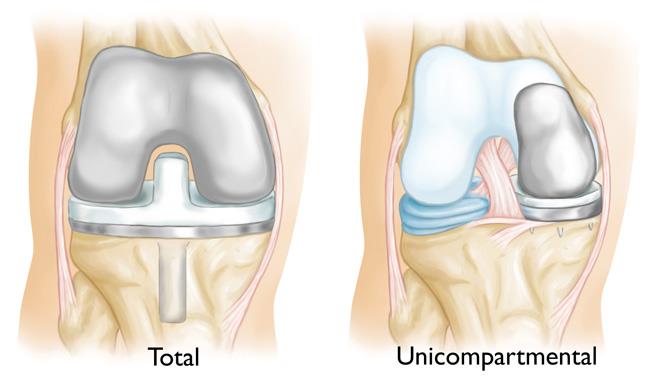UNICONDYLAR KNEE REPLACEMENT
- Home
- UNICONDYLAR KNEE REPLACEMENT


What is Unicondylar Knee Replacement:
In Unicondylar knee replacement (also called ” Unicompartmental ” knee replacement) only a part of the knee is operated.
This method is a choice to full knee replacement for sufferers whose infection is defined to just one section of the knee.Therefore, Unicondylar knee replacement is performed through a shorter cut, sufferers normally consume short time period in the hospital or clinic and return to regular movements fast as soon than total knee replacement patients
Causes
Hurting while walking for small distances.
Escalating down or upstairs.
Feels pain when you are doing the regular activity.
While sitting feeling of pain or stiffness.
Joint stiffness after waking up from the bed.
Due to Injury, swelling, redness around the infected area.
Feel hardness or crutching in the knee during walking, motion and running.
Advantages of Unicondylar Knee Replacement:
The advantages of Unicondylar knee replacement over total knee replacement surgery involve:
Faster improvement
Limited hurt after an operation
Less blood lack
limited morbidity
Low cost
High success rate
complications for a Short time period
Diagnosis of Unicondylar Knee Replacement:
If you are bearing from several of the given symptoms, you should book an appointment with a knee expert. Your surgeon will review:
Your medical records and signs
Make a clinical examination of your walking style, analysis pattern of getting up to the chair, your joint alignment, and stability of affected knee ligament.
Your Recovery at Home:
The completion of your operation will depend mostly on how properly you attend your orthopedic consultant guidance while you are at home the first few weeks after surgery.
Avoiding stair-climbing until prescribed by your orthopedic doctor
To decrease your knee inflammation, you may use ice to the knee.
Take painkillers for relieving pain as prescribed by your doctor.
By seeing a doctor in a clinic, you can remove stitches.
A progressive walking schedule to gently improve your movement, mobility, and motion initially in your home.
Avoid driving until your doctor tells you to do.
Using a walker until your knee performs the right movement and motion.
Avoiding falls
Recovery at home:
Take a halt for rest when you feel tired. You may need a rest, but don’t rest on the bed for the full day.
When you lie or seat, use always a chair.
You have to use your arms to push you to stand up.
Using crutches or a walker for walking
Don’t drive for few weeks
Avoid those movements where you might be fall.
Don’t use sitting for more than 1 hour at a time.
Don’t lift any heavier things.
Take only prescribed medicines
Doing Rehabilitation exercises which are prescribed by your surgeon
Use ice if you have swelling or pain
Try to stay at your ideal weight.
In conclusion, For more information, please take an appointment to Dr. Harish Talreja
Call Us Today for Consultations
Feel free to pay us a visit. You won’t regret it for sure.










